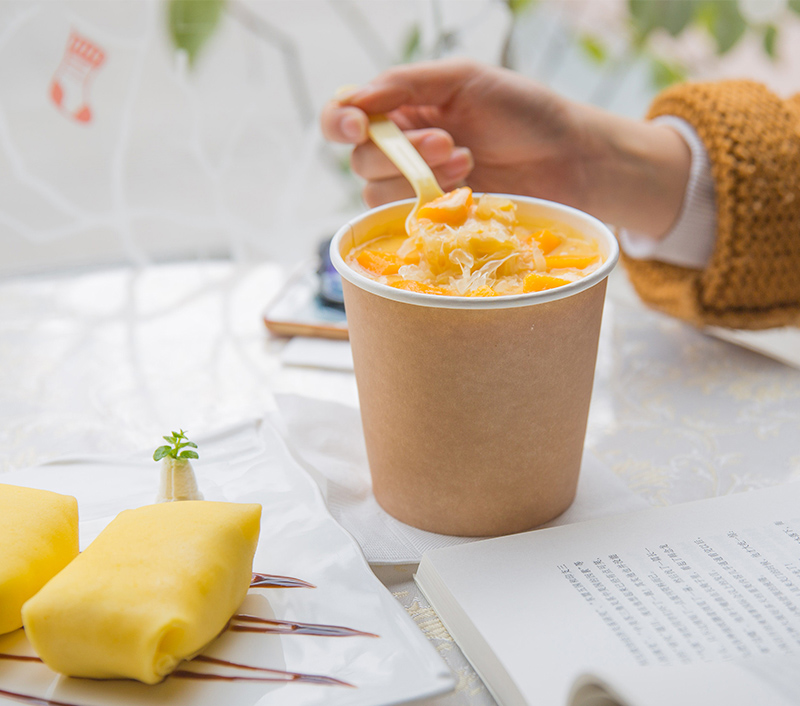
Paper bowls have become a ubiquitous part of modern life, bridging convenience and functionality in both residential and commercial settings. Unlike traditional ceramic or plastic bowls, they combine lightweight design with disposable (or recyclable) properties, making them ideal for food service, events, and everyday quick meals. Their widespread adoption stems from careful material engineering and adaptability to diverse usage needs.
The material composition of paper bowls is tailored to balance durability and food safety. The base layer is typically made from kraft paper or bleached paperboard—materials chosen for their strength and ability to hold shape when in contact with liquids or semi-solid foods. To prevent leakage, most paper bowls include a protective coating: common options are polyethylene (PE), a food-safe plastic film that creates a moisture barrier, or plant-based alternatives like polylactic acid (PLA), a biodegradable polymer derived from corn starch or sugarcane. Some high-end paper bowls for hot foods (such as soups or noodles) may also have an additional heat-resistant layer to prevent the outer surface from becoming too hot to handle. The thickness of the paper and coating varies by intended use: lightweight bowls (150-200 g/m² paper density) suit cold foods like salads or desserts, while heavy-duty variants (250-350 g/m²) are designed for hot, dense foods or extended use.
Production of paper bowls follows a streamlined, automated process. It begins with cutting flat paper sheets into circular “blanks,” which are then formed into bowl shapes using hydraulic presses. The seams are sealed with food-safe adhesives, and the protective coating is applied via extrusion or lamination—either to the inner surface alone (for basic bowls) or both inner and outer surfaces (for enhanced durability). Quality control steps include testing for leakage (by filling bowls with water and monitoring for seepage) and checking coating adherence to ensure no particles transfer to food. Many manufacturers also comply with global food safety standards, such as FDA regulations in the U.S. or EU 10/2011, to confirm suitability for contact with edible items.

Paper bowls are categorized by their intended use, with distinct designs for different scenarios. Cold-food bowls are shallow with wide rims, ideal for ice cream, yogurt, or fruit salads—their thin coating focuses on preventing liquid absorption rather than heat resistance. Hot-food bowls are deeper with reinforced rims and thicker walls, often featuring a ribbed outer surface to improve grip and insulate against heat. These are commonly used for soups, stews, and instant noodles. Compostable paper bowls, made with PLA coatings and unbleached paper, are designed for eco-conscious settings like outdoor events or cafes aiming to reduce plastic waste. Additionally, there are specialized variants, such as portion-control bowls (5-8 oz capacity) for snacks or condiments, and large-capacity bowls (16-24 oz) for family-style servings at parties.


